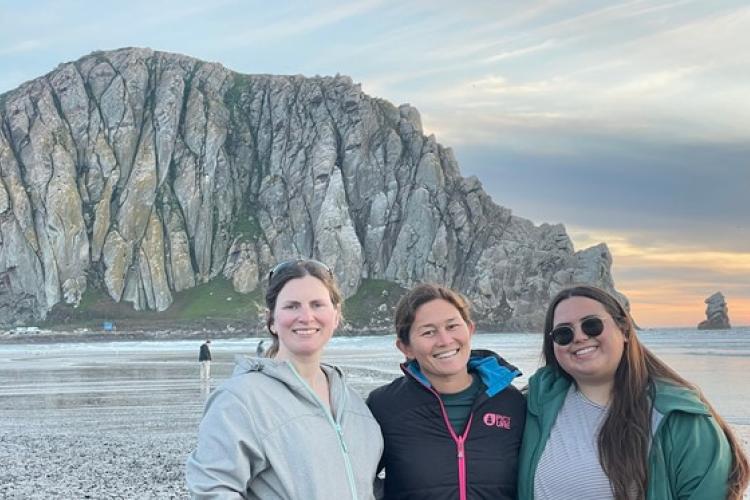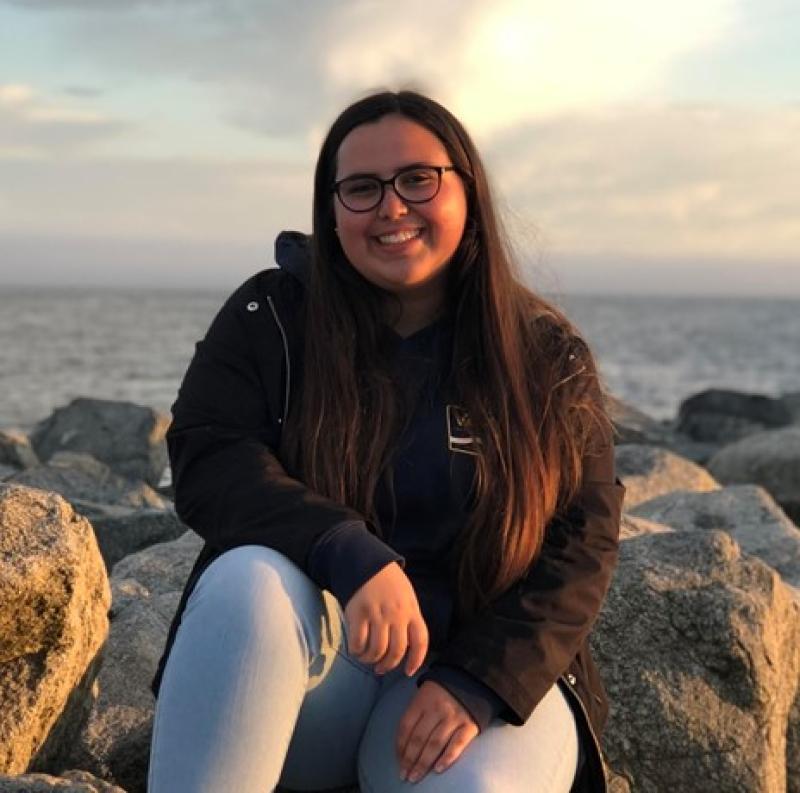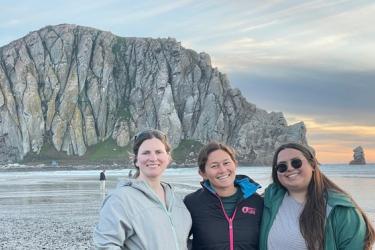Over the past few years, myself and the rest of my team at the Southwest Acoustic Ecology Lab (SAEL) have dedicated extensive effort to collect and analyze passive acoustics data for our ADRIFT in the California Current project. Our team and our partners have been collecting data from central California to northern Oregon, to assess the ocean soundscapes and provide baseline data to assist in the planning and management of offshore wind energy development.
I had the privilege of contributing to this fieldwork in Morro Bay, where I spent a few weeks over the past year deploying and recovering our passive acoustics drifting buoys. In November 2023, we completed our fourth and final Central California Collaborative Passive Acoustic Monitoring Survey (CCC-PAM) and I wanted to take some time to reflect on the invaluable experiences I gained through these trips.
I have learned so many lessons from my time at sea on our CCC-PAM surveys. I had spent a decent amount of time on small boats prior to starting this job but spending 12 hours a day working on a boat is a whole different experience! Sensitive and costly electronics do not always go hand in hand with salty seas, so it was essential that all the prep and deployment of our equipment was meticulously planned and properly executed. Doing all of this in rough seas and with a bout of sea sickness was a serious learning curve for me. Thankfully, each day on the water I was reassured by our amazing science team, who I could both learn from and lean on for guidance.
Throughout our surveys, we had a rotating cast of scientists, students, community members, and collaborators who took turns joining us. This dynamic mix of people on board each day added an extra layer of enjoyment to our surveys and allowed us to work on some awesome projects and make the most of our time spent on the water. While our buoys were recording and drifting through the Morro Bay Wind Energy Area, we serviced other passive acoustic monitoring stations in Monterey Bay National Marine Sanctuary and the proposed Chumash Heritage National Marine Sanctuary. We also utilized our transit time to complete marine mammal and seabird visual surveys.
This year we completed three CCC-PAM surveys (March, July, and November) to assess seasonal differences in marine mammal presence. Summer upwelling in the California current supports phytoplankton blooms and increases food availability for resident and migratory marine mammals in this area. Our visual surveys give us some insight into these seasonal shifts. During our March survey, we saw 30 gray whales and over 100 humpbacks. Compared to our most recent November survey where we saw zero gray whales and fewer than 20 humpbacks. While we’re still working to analyze our acoustics data, these visual surveys provide us with real-time information on who and what we might hear throughout the year.
Each trip had its own list of obstacles we had to overcome to collect our data. Between atmospheric rivers and crazy winds, every survey had at least one bad weather day where we had to cancel operations. We also had our fair share of inopportune boat repairs and equipment malfunctions. And I can’t even begin to explain how the pandemic delayed our fieldwork efforts. Many of these challenges were things that never would have even crossed my mind when planning fieldwork, but it's the unfortunate reality of working in this extreme environment and I quickly learned the importance of flexibility and resourcefulness. Despite these obstacles, our CCC-PAM surveys were extremely successful, and all of these challenges can be taken as learning and growing experiences that will help me on future fieldwork expeditions.
On the positive side, all of these setbacks gave us the opportunity to have some unexpected adventures off the boat as well. Morro Bay is such an amazing community filled with welcoming locals and a thriving coastal environment. When we finished our fieldwork, we were able to squeeze in a few nature walks, visit the local farmers markets, and we even joined the Wednesday night juggling club a couple of times! Our on-shore time also gave me the opportunity to bond with our science party outside of a typical work environment and build relationships that will last a lifetime. Before this year, Morro Bay was simply a drive-through town for me on my California road trips. However, after being involved in the community and discovering its charm, Morro Bay has quickly become one of my favorite places on the central coast and I see myself returning there for years to come.
As I drove our equipment back to San Diego for the last time and bid farewell to ADRIFT CCC-PAM fieldwork, I reflected on all the amazing experiences and wonderful people I met along the way. Throughout these surveys, I experienced both professional and personal growth, evolving as a scientist and an individual. Now that all our recordings and buoys are back on shore, it's time to buckle down and dive deeper into the data to get a better understanding of who and what is contributing to the ocean soundscapes. Stay tuned!




